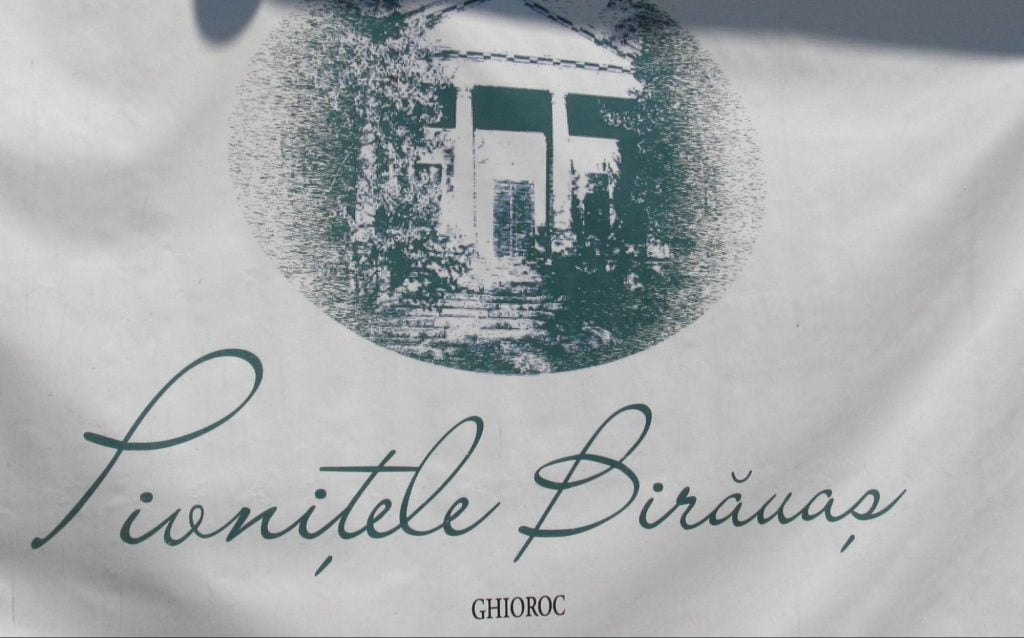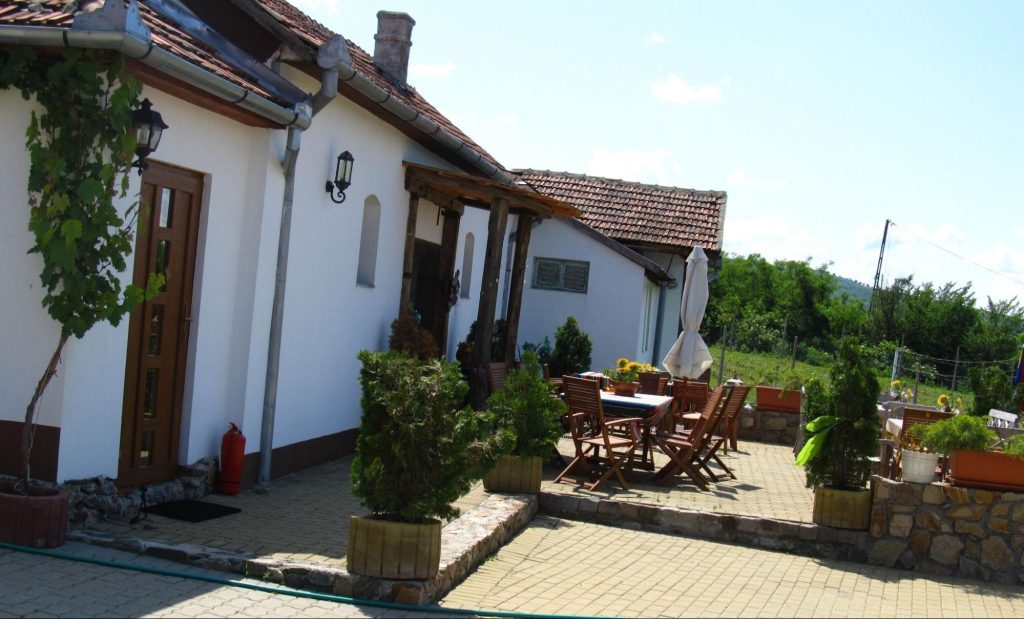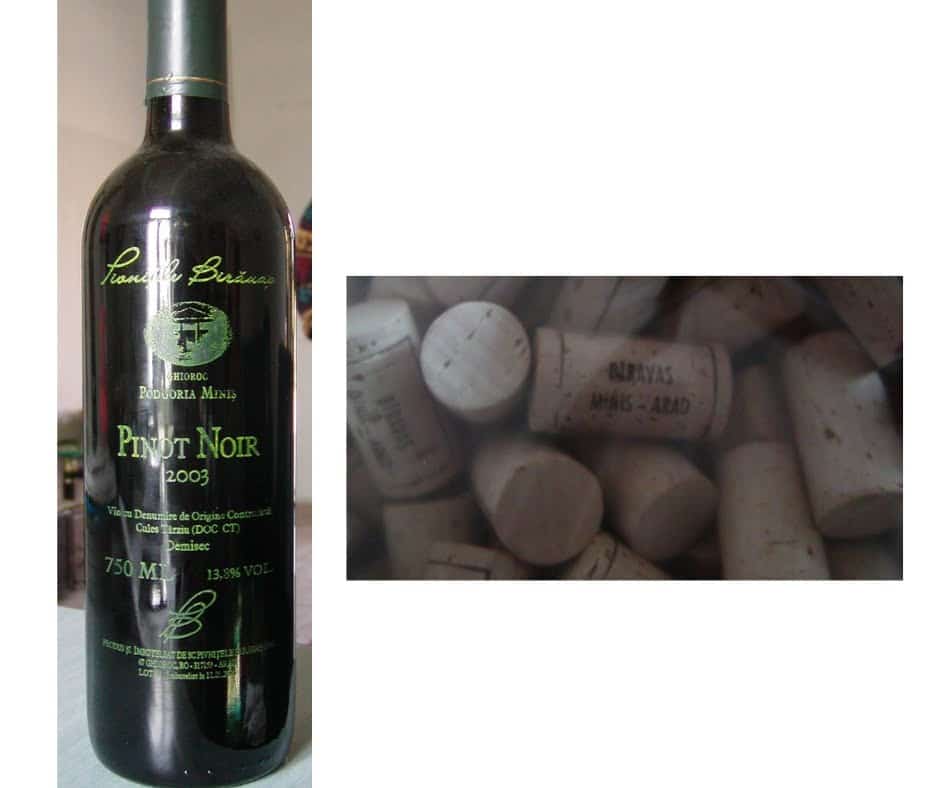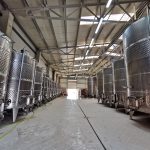The ‘Pivnitele Birauas’ – the jewel of the Vineyard, with its 3 ha of grapevines in the ‘Dambul Ghiorocului’, right where the imaginary junction between two wine-growing areas is made, a sort of yin and yang of wines, managed to concentrate the whole history of the Minis – Maderat Vineyard.

Photo source: Mirela Heizer
The most beautiful projects are born from memories
In the early 2000s, Mr. Birauas, out of nostalgia for his childhood in the Transylvanian lands, made an investment for the soul, buying the premises of Farm 5, the former Baratca State Agricultural Enterprise (I.A.S) and the Cabernet Sauvignon plantation that surrounds the administrative buildings. Most of the farms of the former I.A.S. had a few grapevines planted around the premises, but here the grapevine rows surround everything like a nest.
The wine cellar, rebuilt on the foundation of the barracks intended for seasonal workers who came to work at Farm 5, respects the technological flow and had from the beginning the most modern facilities. While the vineyard used to store wine in huge polestif tanks, at the ‘Pivnitele Birauas’ there was a stainless steel tank with a float, so that the wine is never kept empty. There I saw for the first machine for bottling only 12 bottles, the whole bottling room tiled and the floor painted with a waterproof substance, like for swimming pools, easy to clean and sanitize.

Photo source: Mirela Heizer
In the big building there used to be a small office, the mechanic’s garage and the storage room with tools and various inventory items. The storage room, which used to be the largest room, was converted into a tasting room. Elegantly decorated by Mrs Birauas, in the rural German style, the room has become a small museum in itself. It is a collection of household and wine-making objects from the area, of considerable age, beautifully reconditioned or kept intact, as the artifact required. The pianina, still functional, dates back to the last century and makes its presence felt at every event, under the hands of some enthusiast or amateur.
The cottage, a small house that preserves the typical Transylvanian architecture, probably built around 1840-1850, was brought and planted there, as if it was local, the Birauas family rejuvenated it and turned it into the guard’s cabin.
The winegrower is Nature’s Servant
I did not freely compare the plantation to a nest, because one year, I was invited to take part in the grape harvest (Saturday). The meeting was at 1pm, because the workers were harvesting grapes from other owners, they were going to have a lunch break, rest a bit and then come back with fresh forces and in a few hours they quickly harvested the 2,20 Ha, with a Cabernet Sauvignon planted in the 70s.
At 11:30, I received a phone call from Mr. Birauas, in which, almost sighing, he told me that, in half an hour, a flock of starlings had eaten every last berry of his wine grapes. All the grapes! I don’t know if, after the conversation was over, he sighed in pain, but even though I had invested only respect, admiration and a beautiful friendship, I cried.
The aggressive attack by starlings over the last 10 years is one of the realities of climate change and human action on crop genetics. In our rush for profit, we have bred or selected varieties of late cherry, very early and very late grapes, offering them as all inclusive, permanent food.
The starlings (Sturnus vulgaris), popularly called cherry eaters, resident in western and southern Europe and south-west Asia, no longer go in search of food, which they used to do quite far away. Although the Iberian Peninsula and North Africa are the best breeding grounds, the starling flocks dissipate with each such migration. Starlings stay in the temperate-continental zone, even over winter, because they have something to eat. And they fear nothing, being particularly intelligent and voracious. Now we can see those huge flocks dancing in the sky in a phenomenon called murmuration.
The place chooses the man who will sanctify it
The plantation in "Dambul Ghiorocului", as the locals call the area where the ‘Pivnitele Birauas’ are located, has been authorized to supply grapes for the production of Minis Protected Designation of Origin (PDO Minis) wines since the first harvest produced under the new owner’s brand. The border between the two areas of the Minis-Maderat Vineyard was the last bastion of red wine production.
The steep hills starting from Lipova, culminating with the skeletal slopes of Baratca, passing through Minis and reaching Ghioroc, were famous 40 – 50 years ago, for the black grapes, which were the basis of the best red wines of the Minis-Maderat Vineyard.
On the other hand, the Maderat wine-growing center, starting from Cuvin and stretching to Luguzau, Silindia and Satu Mic, with its flat hills and slightly deeper soil, has been covered, since before 1989, with white grapevine varieties of high production: Mustoasa de Maderat, Feteasca regala, Riesling italian and Muscat Ottonel.
The first wines certified under the ‘Pivnitele Birauas’ brand were from the 2003 vintage, a Cabernet Sauvignon, from old vines, which has proven its potential over time, in private collections there are still bottles with that wine, even if, among the 60,000 bottles in the cellars, only very few were left.
With the vineyards conversion-restructuring programs, the plantation (although not at the end of its official life cycle – it was under 40 years old!) was replaced with a Cabernet Sauvignonclone, much more productive and slightly more resistant to drought. It is only in recent years that production has begun to show the positive correlation with terroir, because yes, ‘Pivnitele Birauas’ has been making terroir wines since the beginning.
Even the purchas Pinot noir, from the neighbors, where during the year they closely followed the technology, in order to have the guarantee of the self-imposed quality level, kept the line of limited edition, but very special, boutique-winery wines.

Photo source: Mirela Heizer
In 2009, 2.02 ha were replanted on the same site, so that in 2013 the first harvest (4800 kg/ha) of young Cabernet Sauvignongrapevines appeared. As in the first years of the vineyard, it will never direct its full potential towards the grapes, when it is mainly concentrated on vegetative growth, the wines obtained were unusually difficult to control and round.
Since 2019 ‘Pivnitele Birauas‘ has a new owner, a specialist with oenology studies in Vienna, who has been granted, along with the winery and the vineyard, the right to continue using the brand, proof of his confidence in the professionalism and ability to carry on the already revived tradition. And the story goes on and who knows who will accompany it on its journey…
Wines tasted and recommended by Wines of Romania
- Pivnitele Birauas Cabernet Sauvignon Reserva 2015
- Pivnitele Birauas Cabernet Sauvignon Reserva 2017
- Josef Cabernet Sauvignon 2017
It is a wine that was intended as a tribute to those who made wine in the old days, from grapes picked from these hills.
- Pivnitele Birauas Cabernet Sauvignon Reserva 2018







